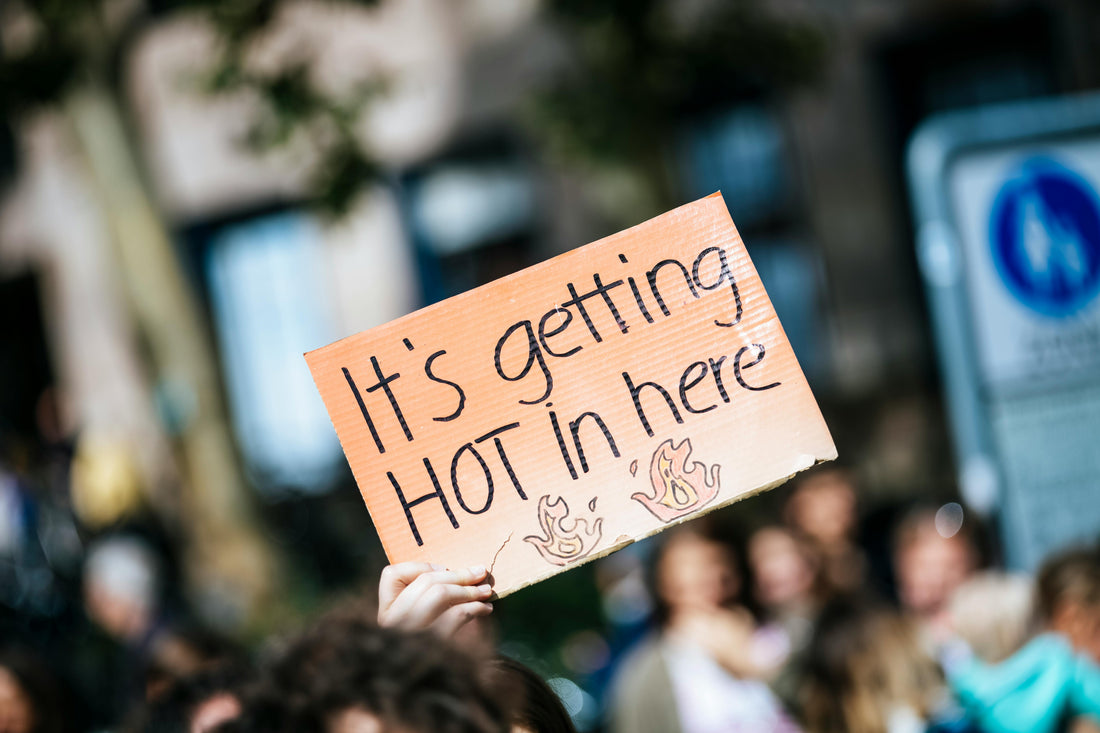As the temperatures rise, so do the risks associated with intense training in hot weather. Whether you're sprinting down a track or chasing a ball on the field, training in the heat brings unique challenges — and young athletes, in particular, need to be extra mindful. Their bodies are still adapting to extreme conditions, and the consequences of overheating can be serious.
This guide covers key strategies to stay safe, hydrated, and high-performing when training in hot and humid conditions.
🔥 Why Training in the Heat is Risky
When you exercise in hot weather, your body has to work overtime to cool itself. Sweating helps, but it also leads to fluid loss, electrolyte imbalance, and rising core temperature — all of which can impair performance and lead to heat-related illnesses like:
- Heat cramps (painful muscle spasms)
- Heat exhaustion (dizziness, nausea, fatigue, rapid heartbeat)
- Heat stroke (a medical emergency with confusion, loss of consciousness, or body temps above 104°F/40°C)
Young athletes may be more vulnerable because they sweat less efficiently and often don’t recognize the signs of overheating until it's too late.
💧 Hydration is Non-Negotiable
Start hydrated, stay hydrated, and rehydrate. Here's how:
- Before training: Drink 16–20 oz (about 500–600 ml) of water 2–3 hours before activity.
- During training: Sip 5–10 oz (150–300 ml) every 15–20 minutes. Add electrolyte drinks (not just water) during longer or more intense sessions.
- After training: Replace every pound of body weight lost with 16–24 oz of fluid. Include sodium-rich snacks or electrolyte drinks to replenish lost minerals.
💡 Pro tip: Monitor urine color — pale yellow = good. Dark yellow or amber = time to hydrate.
🧢 Dress Smart & Seek Shade
- Wear lightweight, light-colored, moisture-wicking clothing.
- Choose breathable hats or visors to reduce direct sun exposure.
- Take shade breaks regularly — even 5 minutes out of the sun can make a big difference.
- Set up cooling zones with fans, cool towels, or ice water buckets if possible.
🕑 Adjust the Schedule
- Train early or late in the day when temperatures are lower.
- Avoid training during peak heat (usually 11 a.m.–4 p.m.).
- Coaches should shorten sessions or include more breaks on high-heat days.
⚠️ Know the Warning Signs
It’s crucial that athletes, coaches, and parents all recognize early symptoms of heat illness:
Signs of Heat Exhaustion:
- Heavy sweating
- Dizziness or fainting
- Nausea or vomiting
- Headache
- Muscle cramps
- Cool, pale, or clammy skin
- Weak but fast pulse
Signs of Heat Stroke (Call 911 Immediately):
- Body temperature over 104°F (40°C)
- Hot, dry skin (or damp skin that’s stopped sweating)
- Confusion or slurred speech
- Seizures
- Loss of consciousness
If any of these occur:
- Move the athlete to a cool or shaded area.
- Remove excess clothing.
- Cool the body with cold packs, fans, or immersion if possible.
- Provide hydration only if the athlete is conscious and not vomiting.
✅ Heat Acclimatization Matters
It takes about 7–14 days of gradual exposure to adjust to training in heat. Start with shorter, less intense workouts and gradually increase intensity and duration over time. Don’t jump straight into high-volume training on Day 1 of summer.
🧠 Teach Athletes to Self-Monitor
Young athletes should be encouraged to speak up if they feel “off.” Teach them to:
- Check in with how their body feels.
- Take breaks even if others aren’t.
- Never “push through” dizziness or nausea.
Coaches and parents should reinforce that taking care of your body is a sign of strength, not weakness.
🏁 Final Thoughts
Training through the summer is a great way to build endurance and stay competition-ready, but it shouldn’t come at the cost of your health. With the right strategies — proper hydration, smart scheduling, and heat awareness — young athletes can thrive even when the temperature soars.
Stay cool, stay safe, and keep chasing those goals — responsibly.
The Heros Training System is launching soon! Receive programs built by real people (not an App) who understand youth development, athletic training, and injury prevention inside and out. With backgrounds in strength training, medicine, youth training, and sports, we offer both personalized and pre-built programs designed for youth and teenage athletes looking to gain an edge.
Want to stay in the loop? Sign up here to get early access and be the first to know when we launch.
Ready to take your training to the next level and stay ahead of the game? Don't let your fitness journey plateau! Head over to our website to dive deeper into our blog for more expert tips and explore our range of training E-Books. Make sure to follow us on Instagram and Facebook.
We value your input! If you have any questions, specific training requests, or recommendations for future blog topics, please don't hesitate to reach out. We're here to support your fitness goals every step of the way. Remember that more is not always better; better is always better!
Jessica
ACTOS Performance Innovation
Jessica holds a B.S. in Kinesiology and an MPH, with a strong background in health and wellness. She’s worked as a personal trainer, bootcamp instructor, as well as a Health & Fitness Director, leading large-scale wellness programs. As the former owner of a successful personal training business, she also partnered with local gyms and the military MWR Department to deliver customized fitness solutions.

